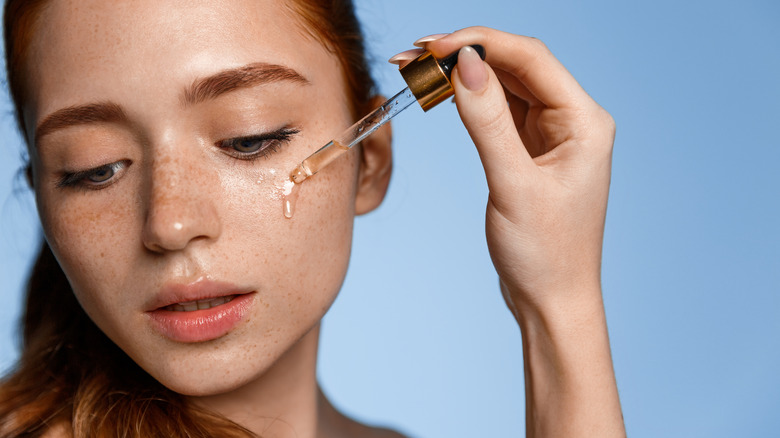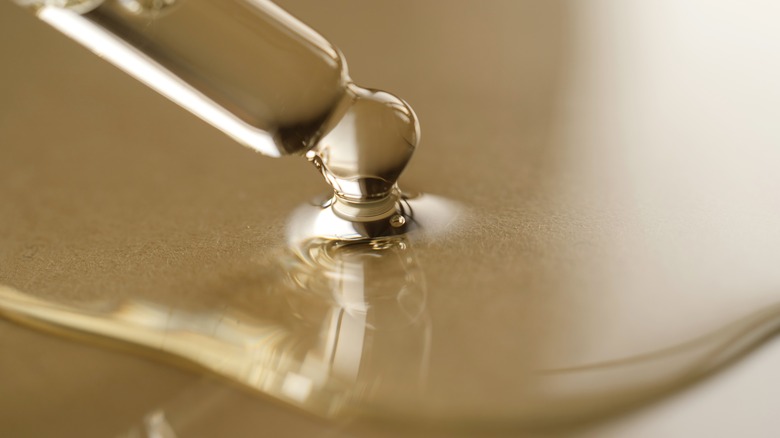If You Have Oily Skin You Should Skip Oil Pulling For Blackheads - Here's Why
Blackheads might be the second most hated facial blemishes, coming in hot after pimples. The thing is, it seems blackheads are harder to get rid of. You pop them, clean them out, and use steam, but they always come back sooner or later. While it's often just sebaceous filaments that should be left alone, sometimes it's really blackheads coming back to haunt the skin.
Blackheads will really be black in color, while sebaceous filaments are more gray or sandy-colored, according to Healthline. When you know the difference, the only thing left is to get rid of them, or at least try. There are so many skincare trends and fads out there that it's getting hard to keep up. Maybe you've been thinking about trying face slugging or you've heard honey tapping improves and strengthens your skin, but be careful. Not every technique works for every skin type.
Trying to get rid of blackheads is a specific need that you need to address depending on your skin type. If you have oily skin, the method that works on someone with sensitive or dry skin might not work for you at all.
What is oil pulling for skin?
While oil pulling is mostly known as swishing some, preferably coconut, oil in your mouth for dental health, it's also translating onto skin. According to Well + Good, oil pulling for the skin is actually just oil cleansing revamped.
The method consists of applying oil to the skin and massaging it in for about 15 minutes, and it's science backed. "Blackheads are clogged with oil-based sebum and applying oil to the skin can partially dissolve the sebum and allow the plugs to loosen up," doctor Raja Sivamani MD, MS, a board-certified integrative dermatologist, explains to Well + Good.
However, it's only going to work properly if your blackheads are more superficial. As per Dr. Sivamani, "Oil cleansing won't work on pores that are completely clogged from cells and debris that may need to be exfoliated first." So, for best results you should exfoliate first and then use oils as needed.
Oily skin and oil pulling don't mix
Every person's skin is unique and there is most likely a tried and true method out there for whatever your skin's needs may be. Knowing your skin is the first and foremost step to treating it properly.
If you have oily skin, some factors that influence how it might react to oils are the type of oils you're using, the amount of it, and how long it's sitting on your face. Hence, oil pulling might be a trend to skip in order to avoid clogging your pores further.
Still, you don't have to completely banish oils from your skincare routine. According to FOREO, oily skin tends to need more sebum regulation. In that case, more lightweight oils are to be used, such as tea tree oil or grapeseed oil. "It's important that people choose gentle oils that are not full of preservatives or fragrances that might irritate the skin," Dr. Raja Sivamani tells Well + Good, adding oils "should be used cautiously and tested in a small area before they are used over the entire face." Also, make sure to not go overboard with the amount you're using since a few drops will be sufficient to treat oily skin. Instead of oil pulling, focus on the right skincare ingredients for oily skin and building an effective skincare routine.


